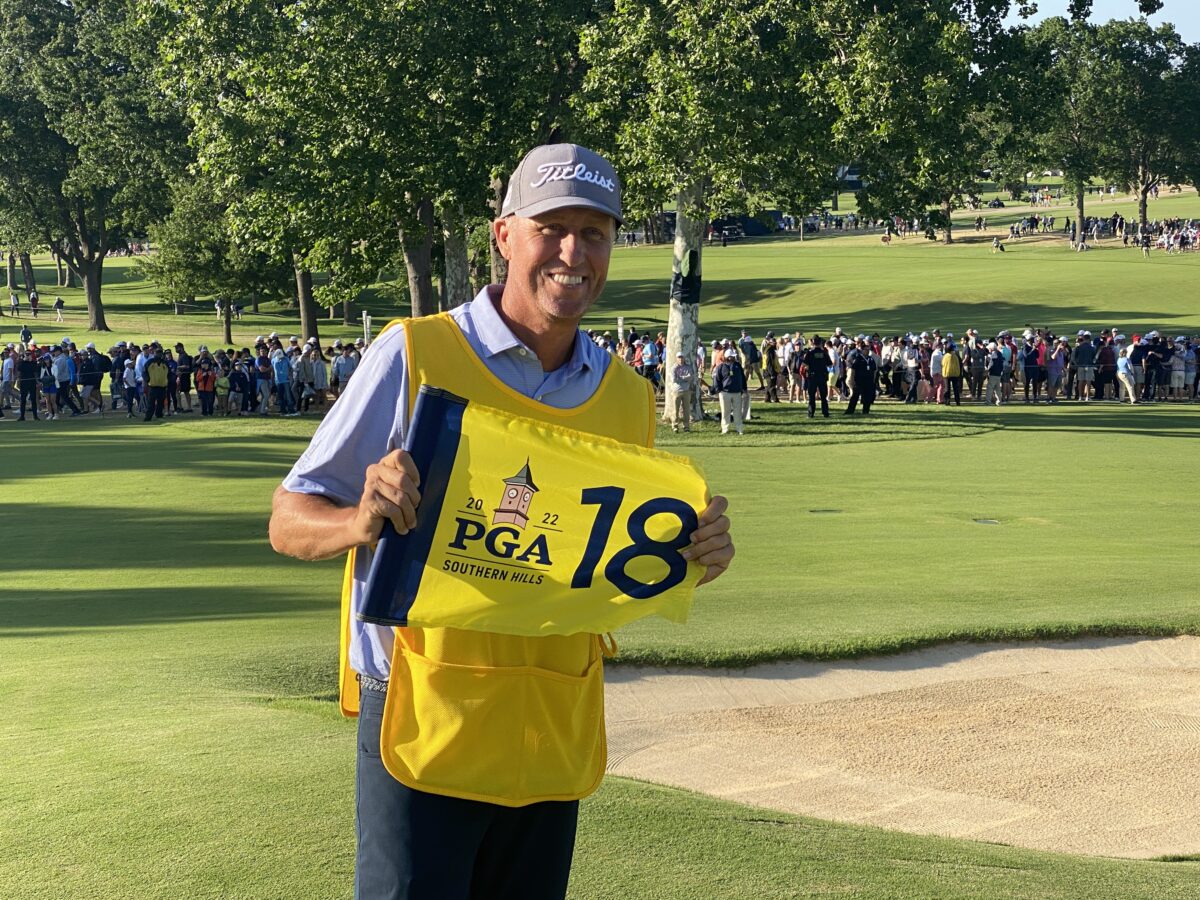No caddie has enjoyed his winning flag quite like Ted Scott, who posted a video of himself with the 18th-hole flag and pole from this April’s Masters on his tractor, motorcycle and while brushing his teeth among other random things.
Jim “Bones” Mackay was on the bag for his sixth major at the PGA Championship in May, but this flag likely means the most to him and will get top-shelf status. Then there was England’s Billy Foster, who finally tasted victory at a major after 40 years on the bag and kissed the flag in the lower right corner as Matt Fitzpatrick was victorious at the U.S. Open in June. New Zealand’s Sam Pinfold made off with both a Players Championship and British Open flag this year working for Aussie Cameron Smith. And who can forget Japan’s Shota Hayafuji’s beautiful gesture: removing his hat and bowing his head after claiming the flag at Augusta National last April following Hideki Matsuyama’s triumph. From all four corners of the globe, caddies know the routine.
“As a youngster watching golf tournaments on TV in Japan, I saw that it is a tradition for caddies to take home the 18th-green flag,” Hayafuji says. “My heart was full of gratitude, and it was the natural thing for me to bow and show respect for the Masters.”
https://www.instagram.com/reel/CcRSQigMlKL/?igshid=YmMyMTA2M2Y=
It has become a tradition unlike any other. Every week on virtually every tour, the winning caddie grabs the flag on 18. It has become the caddie’s trophy, as much of a ritual as players removing their hats and shaking hands after the round. But what is the origin of this tradition and who started it? No one seems to know.
“I don’t know how it happened,” says Scott, who earned his third Masters flag working on the bag of Scottie Scheffler to go with the previous two he pocketed with Bubba Watson in 2012 and 2014. “But it’s a cool tradition, a huge reward and a special thing. Whoever started it, I’m grateful for it.”
Golfweek did some digging, hoping to get to the bottom of this unsolved mystery, and along the way the stories we heard about caddies and flags were too good not to share.


